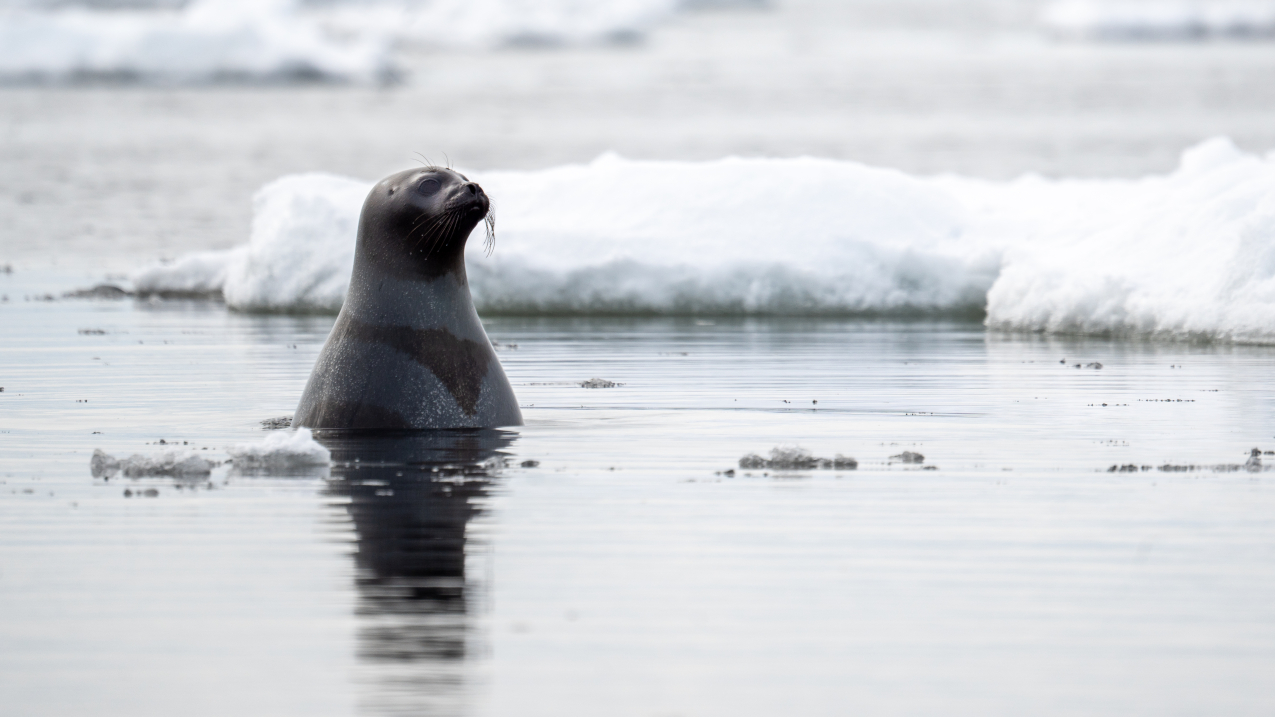Biden-Harris Administration, NOAA invest $3.84 million to enhance Arctic research, data management and climate resiliency
Today, the Department of Commerce and NOAA announced an award of $3.84 million in Inflation Reduction Act funding to support climate resiliency projects in Alaska and the Arctic through President Biden’s Investing in America agenda.
These funds from the Inflation Reduction Act will allow use of climate data to develop products, tools and systems tailored to the needs of Alaska communities, which could include modeling tools for predicting sea-ice patterns, data management enhancements to empower local decision making and new marine ecosystem models for climate-resilient fisheries management. The funds will also bolster NOAA’s climate adaptation capacity-building efforts with a variety of academic, local and Indigenous partners.
“Thanks to the Biden-Harris Administration’s Investing in America agenda, this award will help NOAA improve access to climate information across Alaska and the Arctic,” said U.S. Secretary of Commerce Gina Raimondo. “We are proud to support climate resilience projects like this that get communities the resources and information they need to mitigate the impacts of climate change and strengthen the region’s ecosystems, fisheries and economy.” The most recent Arctic Report Card finds the Arctic region is warming about three times faster than the rest of the planet in response to climate change. This warming is causing dramatic changes to annual sea-ice patterns and the distribution and abundance of fish stocks, which are vital to subsistence fishing and hunting and access to traditional foods for Indigenous and coastal Alaska communities.
(Image credit: NOAA)
Warming seas are also bringing new environmental changes, such as harmful algal blooms and marine heatwaves. Observational and other environmental data can equip Arctic communities to respond to such events, but this data is often challenging to find and may not be user-friendly, which hinders its use for community decision making.
“Residents of Alaska face the realities of climate change every day,” said NOAA Administrator Rick Spinrad, Ph.D. “Through these investments, NOAA is helping to promote climate resiliency for rural and Indigenous communities in the rapidly changing Arctic region. These funds demonstrate NOAA’s dedication to building lasting, impactful partnerships with the Indigenous communities of Alaska and to addressing the unmet needs of these communities made worse by climate change.”
The $3.84 million award will allow work on projects such as:
- Co-designing sea-ice prediction and modeling tools ($752,000): NOAA’s Global Ocean Monitoring and Observing Arctic Research Program will fund two new projects that will improve upon existing sea-ice models by integrating new observational data, including tidal data and satellite imagery. Projects will be led by researchers at NOAA’s Cooperative Institutes for Great Lakes Research (CIGLR offsite link) and for Climate, Ocean, and Ecosystem Studies (CICOES offsite link), and one project will be carried out as cooperative research with residents of the Kotzebue Sound region of Alaska.
- Enhancing Arctic data access and management tools for climate resilience ($1.58 million): NOAA’s Arctic Research Program is investing in three competitively-awarded projects that, collectively, will advance accessibility and usability of Arctic environmental data through the creation of digital tools and databases. Additionally, there will be support for an employee who can steward the marine data strategy and encourage greater program-wide consistency and accessibility of data.
- Expanding Alaskan capacity to address climate adaptation needs ($1.13 million): NOAA will provide funds to support capacity building across Alaska in partnership with the University of Alaska’s Alaska Center for Climate Assessment and Policy offsite link (ACCAP). ACCAP will use these funds to hire a tribal liaison and a science communications specialist. These positions will build critical relationships with Alaska communities to better understand and address their climate adaptation needs.
- Building climate-ready fisheries management through research and modeling ($377,400): NOAA’s Climate and Fisheries Adaptation Program will provide funds to hire an additional Alaska Climate Integrated Modeling project (ACLIM) ocean modeler to help expand current models into the Arctic and help bridge understanding and advice from diverse knowledge systems with respect to climate impacts on subsistence and fishery resources. The new member of the team will help co-develop culturally and regionally tailored ACLIM model indicators of climate information to help support Bering Sea coastal community adaptation and climate planning (e.g., harmful algal blooms risk indicators, marine heatwave indicators).
Collectively, these proposed projects support NOAA’s commitment to equipping communities, stakeholders and the public with the insights and tools needed to navigate and build resilience in the face of a rapidly evolving Arctic climate.
“We are so excited to see the impacts these projects will have, and to continue learning from our partners about ways that the Arctic Research Program’s observational data can be leveraged for decision making in the Arctic,” said NOAA’s Global Ocean Monitoring and Observing, Arctic Research Program director, Sandy Lucas, Ph.D.
Visit NOAA’s Inflation Reduction Act web portal to learn about current and future funding opportunities.
Climate, weather, and water affect all life on our ocean planet. NOAA’s mission is to understand and predict our changing environment, from the deep sea to outer space, and to manage and conserve America’s coastal and marine resources.

